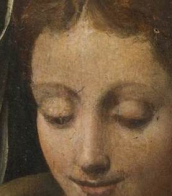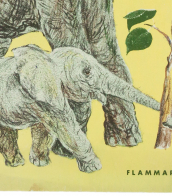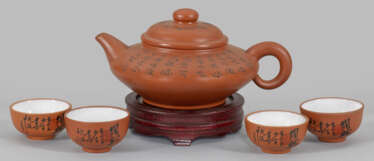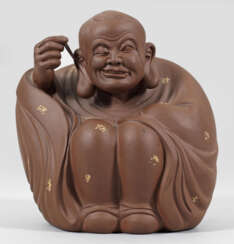xix искусство

Jean Leppien (born Kurt Leppien) was a German-French painter.
From 1929, Leppien studied at the Bauhaus Dessau with Josef Albers, Wassily Kandinsky and Paul Klee. He lived in France since 1933, from where he was deported in 1944. After the war he stayed in France as Jean Leppien, where he exhibited at the Salon des Réalités Nouvelles. Leppien is one of the most important representatives of the Geometric abstraction in France. Stylistically, he is close to painters such as Alberto Magnelli, Jean Deyrolle, Michel Seuphor, Emile Gilioli and Aurélie Nemours.


Jean Leppien (born Kurt Leppien) was a German-French painter.
From 1929, Leppien studied at the Bauhaus Dessau with Josef Albers, Wassily Kandinsky and Paul Klee. He lived in France since 1933, from where he was deported in 1944. After the war he stayed in France as Jean Leppien, where he exhibited at the Salon des Réalités Nouvelles. Leppien is one of the most important representatives of the Geometric abstraction in France. Stylistically, he is close to painters such as Alberto Magnelli, Jean Deyrolle, Michel Seuphor, Emile Gilioli and Aurélie Nemours.





Charles Dickens, full name Charles John Huffam Dickens, is the most famous British writer of the Victorian era, a classic of world literature.
From childhood the future writer learned all the hardships of life in poverty: his father in prison for debts, hard work in a factory. Then service stenographer in court and reporter developed in him a strong attachment to journalism and contempt for both the law and parliament.
Dickens had many talents: in addition to literary work, he was an actor, published periodicals, arranged numerous literary readings, where he reveled in the admiration and love of the public. Fecund and versatile, Charles Dickens wrote many brilliant and often comic works. His novels cover a wide range of social, moral, emotional and other aspects. As a subtle psychologist, he is also very interested in the most ordinary people, but also the eccentric, the flawed, and even the insane.
Dickens was immensely popular around the world during his lifetime. His intellect, worldview, and deep reflections on society and its faults enriched his novels and made him one of the great figures of nineteenth-century literature, an influential spokesman for the conscience of his time.
Dickens' best-known and most popular novels are The Pickwick Club Posthumous Notes, Oliver Twist, Nicholas Nickleby, David Copperfield, Cold House, A Tale of Two Cities, Our Mutual Friend, Great Expectations, and The Mystery of Edwin Drood.


Charles Dickens, full name Charles John Huffam Dickens, is the most famous British writer of the Victorian era, a classic of world literature.
From childhood the future writer learned all the hardships of life in poverty: his father in prison for debts, hard work in a factory. Then service stenographer in court and reporter developed in him a strong attachment to journalism and contempt for both the law and parliament.
Dickens had many talents: in addition to literary work, he was an actor, published periodicals, arranged numerous literary readings, where he reveled in the admiration and love of the public. Fecund and versatile, Charles Dickens wrote many brilliant and often comic works. His novels cover a wide range of social, moral, emotional and other aspects. As a subtle psychologist, he is also very interested in the most ordinary people, but also the eccentric, the flawed, and even the insane.
Dickens was immensely popular around the world during his lifetime. His intellect, worldview, and deep reflections on society and its faults enriched his novels and made him one of the great figures of nineteenth-century literature, an influential spokesman for the conscience of his time.
Dickens' best-known and most popular novels are The Pickwick Club Posthumous Notes, Oliver Twist, Nicholas Nickleby, David Copperfield, Cold House, A Tale of Two Cities, Our Mutual Friend, Great Expectations, and The Mystery of Edwin Drood.









Joan Miró, a celebrated Spanish artist, was a master in painting, sculpture, and ceramics, renowned for his unique style that blurred the lines between Surrealism, Fauvism, and Expressionism. Born in Barcelona to a family of a goldsmith and a watchmaker, Miró grew up immersed in the rich cultural heritage of the Barri Gòtic neighborhood. His artistic journey began with drawing classes at the age of seven and continued at the prestigious La Llotja art academy. Despite an initial venture into the business world, Miró's passion for art prevailed, leading him to abandon his clerical career after a nervous breakdown.
Miró's work is noted for its exploration of the subconscious, often depicting a childlike perspective. This approach was both a critique of traditional painting methods and a means of expressing Catalan pride. His art, challenging to categorize, often featured symbolic elements and nationalistic qualities. One of his notable early works, "The Farm," reflects a transition to a more individual style, blending elements of his Catalan roots with broader artistic influences. This piece, later purchased by Ernest Hemingway, encapsulated the essence of Spain in its imagery.
In Paris, Miró joined the Surrealist movement in 1924, where his work began to reflect the influence of automatism, emphasizing spontaneous, automatic, or subconscious creation. He experimented with various mediums, including painting-poetry and collage, and even ventured into set and costume design for Sergei Diaghilev's Ballets Russes.
During World War II, Miró remained in Spain, and his work from this period, including the 22 Constellations series, reflected an interest in the night, music, and stars. His forms became increasingly abstracted, and he experimented with various techniques, often incorporating primary colors and evocative titles.
Miró's career spanned several decades, during which he continually evolved his style and explored new mediums. His contributions to art were recognized with numerous awards and retrospectives, including a major career retrospective at MoMA in 1941 and the Spanish Gold Medal for Fine Arts in 1980. Among his last major works was a tapestry for the World Trade Center in New York City, created in 1974.
For art collectors and enthusiasts, Joan Miró remains a figure of immense interest, not only for his distinct style and contributions to Surrealism but also for his ability to blend poetic imagery with political commentary. To stay updated on new product sales and auction events related to Joan Miró, sign up for our updates and immerse yourself in the world of this extraordinary artist.


Jean Philippe Arthur Dubuffet, a pioneering French painter and sculptor, revolutionized the post-war art scene with his radical Matterism movement. He defied the conventional aesthetics of his time, championing "low art" and propelling a more genuine, humanistic image-making approach.
Dubuffet, born in Le Havre, France, in 1901, was a prominent figure at the Ecole de Paris and an advocate for Art Brut, or "raw art", which sought to capture art's purest form. His works were characterized by a rough, unrefined aesthetic, which eschewed academic norms in favor of spontaneity and authenticity.
Art enthusiasts and experts can view Dubuffet's innovative works at institutions like the Museum of Modern Art, where his legacy as a groundbreaking artist continues to be celebrated. His Matterism philosophy has left an indelible mark on the art world, inspiring generations of artists to embrace the beauty in the unconventional.
For those interested in the avant-garde and the legacy of Jean Philippe Arthur Dubuffet, sign up for our exclusive updates. This service is designed for connoisseurs and professionals in the art and antique sector, promising alerts on new insights and events strictly related to Dubuffet's profound influence.



John Milton Cage Jr. is an American composer, philosopher, poet, musicologist, and artist. Cage is considered one of the leading figures of the post-war avant-garde.
Born in the United States, he studied architecture in Europe, but music and painting seemed more interesting to him and he has achieved impressive success there. John Cage is considered a pioneer of uncertainty in music and the unconventional use of instruments, and is highly regarded for his paintings and prints. In addition, he played a crucial role in the development of modern dance and performance art.
His father John Milton Cage (1886-1964) was an inventor.






















![Верещагин, В.А. Русская и иностранная книга XV—XIX века: [Каталог выставки].](/assets/image/picture_2315265/9f225/kpg-uj6gsu3xjvzondpqzhfemudixltsrzgfavndfqk6e4r0xyjzmhmdga2a-9j1660819561jpg__fix_374_244.jpeg)
![Верещагин, В.А. Русская и иностранная книга XV—XIX века: [Каталог выставки].](https://veryimportantlot.com/assets/image/picture_2315265/9f225/kpg-uj6gsu3xjvzondpqzhfemudixltsrzgfavndfqk6e4r0xyjzmhmdga2a-9j1660819561jpg__fix_374_244.jpeg)
![Верещагин, В.А. Русская и иностранная книга XV—XIX века: [Каталог выставки].](/assets/image/picture_3071349/c903a/by0dexoejll1k85xuh9ejhudj5iwtqft5-rx0x0yuj8xmh500j9ov1oboz3q44t1692870324jpg__fix_374_244.jpeg)
![Верещагин, В.А. Русская и иностранная книга XV—XIX века: [Каталог выставки].](https://veryimportantlot.com/assets/image/picture_3071349/c903a/by0dexoejll1k85xuh9ejhudj5iwtqft5-rx0x0yuj8xmh500j9ov1oboz3q44t1692870324jpg__fix_374_244.jpeg)


![[Charles Dickens (1812-1870)] – Hablot Knight Browne ['Phiz'] (1815-1882)](/assets/image/picture_3619865/cc723/6e06e3e46ec063690ea5de1f3fe4402b1701428400jpg__fix_374_244.jpeg)
![[Charles Dickens (1812-1870)] – Hablot Knight Browne ['Phiz'] (1815-1882)](https://veryimportantlot.com/assets/image/picture_3619865/cc723/6e06e3e46ec063690ea5de1f3fe4402b1701428400jpg__fix_374_244.jpeg)
![[Charles Dickens (1812-1870)] – Hablot Knight Browne ['Phiz'] (1815-1882)](/assets/image/picture_4084696/7fc24/kxityx4pwpqsgadwj41juc6osfvgijev7j5mm7k0syun4lvfpwnk7sfdrzsdtq01719907996jpg__fix_374_244.jpeg)
![[Charles Dickens (1812-1870)] – Hablot Knight Browne ['Phiz'] (1815-1882)](https://veryimportantlot.com/assets/image/picture_4084696/7fc24/kxityx4pwpqsgadwj41juc6osfvgijev7j5mm7k0syun4lvfpwnk7sfdrzsdtq01719907996jpg__fix_374_244.jpeg)
![[Комиссаржевский, Ф.Ф., автограф]. Костюм: [Очерки по истории костюма] / Под ред. и с предисл. Ф.Ф. Комиссаржевского.](/assets/image/picture_1905912/ded0c/gilp14yx0sblgwxeexivcmbpynmfqdqbks-mgczojpp2iq4wthff5tspwnuooiti1639505049jpg__fix_374_244.jpeg)
![[Комиссаржевский, Ф.Ф., автограф]. Костюм: [Очерки по истории костюма] / Под ред. и с предисл. Ф.Ф. Комиссаржевского.](https://veryimportantlot.com/assets/image/picture_1905912/ded0c/gilp14yx0sblgwxeexivcmbpynmfqdqbks-mgczojpp2iq4wthff5tspwnuooiti1639505049jpg__fix_374_244.jpeg)














![Яремич, С.П. Михаил Александрович Врубель: Жизнь и творчество / [С предисл. И. Грабаря]; С. Яремич.](/assets/image/picture_1793606/46ca4/zt6nukwfaqznyjby8o6b2fvflngo1uucuab0986krwtmlbdldp1ks6gbosiib1635872297jpg__fix_374_244.jpeg)
![Яремич, С.П. Михаил Александрович Врубель: Жизнь и творчество / [С предисл. И. Грабаря]; С. Яремич.](https://veryimportantlot.com/assets/image/picture_1793606/46ca4/zt6nukwfaqznyjby8o6b2fvflngo1uucuab0986krwtmlbdldp1ks6gbosiib1635872297jpg__fix_374_244.jpeg)



















